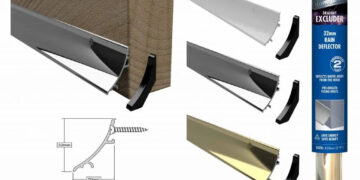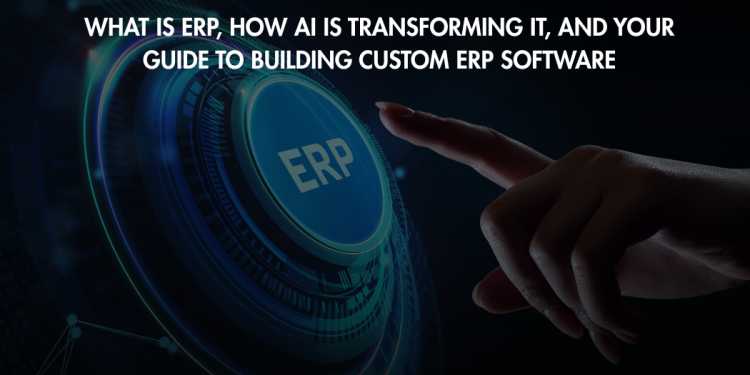The manufacturing landscape is shifting faster than ever before. Companies that once relied on spreadsheets and manual processes are discovering they can’t keep pace with market demands, supply chain complexities, and customer expectations. Enter Enterprise Resource Planning (ERP) systems the digital foundation that’s helping manufacturers streamline operations and gain the visibility they desperately need.
But here’s what’s really exciting: ERP systems are getting smarter. Thanks to artificial intelligence, these platforms are evolving from simple data management tools into intelligent business partners that can predict problems, suggest solutions, and automate complex decisions. For manufacturers still wrestling with inventory nightmares, production bottlenecks, and disconnected departments, AI-powered ERP represents more than just an upgrade it’s a complete operational transformation.
The question isn’t whether your manufacturing business needs ERP anymore. It’s whether you’ll choose a standard solution that fits most companies or build something custom-tailored to your unique processes and goals. Let’s explore both paths and help you make the right choice.
Read Our Blog – Why AI Integration is the Future of ERP Upgrades
What Is ERP for Manufacturing?
Picture your manufacturing operation as a complex machine with hundreds of moving parts. ERP systems are the control center that monitors, coordinates, and optimizes every component to work in perfect synchronization. Rather than having separate systems for inventory, production, sales, and accounting, ERP creates one unified platform where all your business data lives and breathes together.
For manufacturers, this integration solves a critical problem: the chaos that comes from scattered information. When your inventory system shows different stock levels than your production planning tool, or when your sales team promises delivery dates without checking manufacturing capacity, costly mistakes are inevitable. ERP eliminates these disconnects by ensuring everyone works from the same real-time data.
Core Capabilities of Manufacturing ERP
Manufacturing ERP systems pack specialized functionality that addresses the unique demands of production environments:
Smart Production Scheduling: These systems don’t just track what you’re making they optimize when and how you make it. Advanced algorithms consider machine availability, worker schedules, material requirements, and delivery deadlines to create production plans that maximize efficiency and minimize costs.
Comprehensive Inventory Tracking: From raw materials arriving at your dock to finished products shipping to customers, ERP systems monitor every item in real-time. Smart reorder points prevent stockouts while avoiding the cash flow drain of excess inventory.
Integrated Quality Management: Built-in quality modules track inspections, manage non-conformances, and ensure compliance with industry standards. When quality issues arise, the system traces problems back to their source and identifies all affected products.
Connected Supply Chain: Modern ERP systems extend beyond your factory walls to connect with suppliers and customers. This visibility helps you respond quickly to supply disruptions and demand changes.
Advanced Cost Tracking: Understanding true production costs is crucial for profitability. ERP systems track direct materials, labor, overhead, and indirect costs to provide accurate product costing and margin analysis.
Intelligent Forecasting: By analyzing historical sales data, seasonal patterns, and market trends, ERP systems help manufacturers anticipate demand and plan accordingly.
Transforming Manufacturing Operations
The impact of implementing ERP goes far beyond organizing data. Manufacturers report dramatic improvements in operational efficiency when they move from fragmented systems to integrated ERP platforms. Production cycles become more predictable, inventory turns increase, and customer satisfaction improves as delivery promises become more reliable.
Perhaps most importantly, ERP systems provide the foundation for data-driven decision making. Instead of relying on gut feelings or outdated reports, managers can access real-time dashboards that show exactly what’s happening across their operations and make informed adjustments instantly.
Read Our Blog :- Why We Focus on Questions Before Code
How AI Is Transforming ERP for Manufacturing
The integration of artificial intelligence into ERP systems marks a pivotal moment in manufacturing technology. We’re moving beyond systems that simply record what happened to platforms that intelligently predict what will happen and automatically take action to optimize outcomes.
Revolutionary AI Applications
Predictive Equipment Maintenance: AI algorithms continuously analyze data from sensors embedded in manufacturing equipment, learning normal operating patterns and identifying anomalies that signal potential failures. This approach has transformed maintenance from reactive fire-fighting to proactive optimization. Companies implementing AI-driven predictive maintenance see dramatic results General Electric reports 20% reduction in maintenance costs and 70% decrease in unexpected breakdowns across their manufacturing facilities.
Autonomous Inventory Optimization: Traditional inventory management relies on static reorder points and safety stock levels. AI-powered systems dynamically adjust these parameters based on demand patterns, supplier performance, lead time variability, and seasonal trends. The result? Companies typically achieve 20-35% reduction in inventory carrying costs while improving service levels.
Intelligent Production Planning: AI takes production scheduling to new heights by considering hundreds of variables simultaneously machine capacity, operator skills, material availability, energy costs, and even weather patterns that might affect logistics. The system continuously optimizes schedules to maximize throughput while minimizing costs.
Smart Quality Analytics: Computer vision and machine learning transform quality control from inspection-based to prediction-based. AI systems can detect defects that human inspectors might miss and identify process variations that could lead to quality issues before they occur.
Game-Changing Success Stories
Harley-Davidson revolutionized their manufacturing operations by implementing AI-powered ERP across their facilities. The system uses machine learning to optimize production schedules based on real-time demand signals, reducing lead times from 21 days to just 6 hours for certain custom configurations. This transformation helped them achieve mass customization while maintaining efficiency.
Meanwhile, Rolls-Royce deployed AI-driven predictive analytics in their aerospace manufacturing ERP to manage complex supply chains involving thousands of components. The system predicts supply disruptions up to 90 days in advance, allowing procurement teams to secure alternative sources and maintain production schedules.
Quantifying AI’s Impact
The numbers tell a compelling story about AI’s impact on manufacturing ERP:
- Operational efficiency improvements of 30-45% are common when AI is properly integrated
- Demand forecasting accuracy improves by 50-60% with machine learning algorithms
- Production downtime decreases by 25-40% through predictive maintenance
- Inventory optimization reduces working capital requirements by 15-30%
- Quality-related costs drop by 20-50% with AI-powered defect prediction
Next-Generation AI Features
The most advanced AI-powered ERP systems now incorporate conversational interfaces that allow users to interact with complex data using natural language. Plant managers can ask questions like “What’s causing the delay in Building 2?” and receive intelligent answers that not only identify the issue but suggest solutions.
These systems also feature self-learning capabilities that continuously improve performance without human intervention. They adapt to changing business conditions, learn from past decisions, and become more accurate over time. Some systems even provide “what-if” scenario modeling, allowing managers to test different strategies virtually before implementing changes on the factory floor.
How to Build Custom ERP Software for Manufacturing
While standard ERP packages serve many manufacturers well, companies with unique processes, specialized equipment, or specific industry requirements often find that custom-built solutions deliver superior results. Building your own ERP system allows you to create precisely the functionality your business needs without paying for features you’ll never use.
Phase 1: Strategic Planning and Requirements Gathering
Begin with a comprehensive business analysis that goes beyond surface-level processes. Spend time on the factory floor observing how work actually gets done, not just how procedures say it should be done. Interview operators, supervisors, planners, and managers to understand current pain points and future aspirations.
Document your unique competitive advantages and ensure your ERP system enhances rather than standardizes them. If your success comes from rapid customization, build that flexibility into the system architecture. If quality is your differentiator, make quality management a central feature, not an add-on module.
Establish clear, measurable objectives such as reducing order-to-delivery time by 40% or improving inventory accuracy to 99.5%. These goals will guide development decisions and provide benchmarks for success.
Phase 2: Feature Selection and Prioritization
Focus on core functionality that directly impacts your bottom line. Essential modules typically include:
- Advanced Production Control: Beyond basic scheduling, include capacity optimization, constraint management, and real-time production tracking
- Intelligent Supply Chain Management: Supplier performance monitoring, risk assessment, and automated procurement workflows
- Comprehensive Financial Integration: Real-time cost accounting, profitability analysis, and cash flow forecasting
- Customer Experience Management: Order tracking, delivery scheduling, and service history integration
- Business Intelligence Platform: Custom dashboards, automated reporting, and predictive analytics
Prioritize features based on their potential return on investment and implementation complexity. Start with high-impact, low-complexity features to build momentum and demonstrate value quickly.
Phase 3: Technology Architecture and Platform Selection
Choose a technology foundation that supports both current needs and future growth. Modern custom ERP systems should be built with:
- Cloud-Native Architecture: Platforms like Amazon Web Services, Microsoft Azure, or Google Cloud provide scalability, reliability, and global accessibility
- Microservices Design: This approach allows different system components to be updated independently and makes integration easier
- API-First Development: Ensures your ERP can connect with existing systems and future technologies
- Mobile-First Interface: Today’s workforce expects to access critical information from anywhere, on any device
- AI/ML Ready Infrastructure: Even if you don’t implement AI immediately, build the foundation to add these capabilities later
Phase 4: System Integration Strategy
Plan for seamless connectivity with existing systems including accounting software, CAD/CAM tools, quality management systems, and shop floor equipment. Use industry-standard protocols like OPC-UA for manufacturing equipment and RESTful APIs for software integration.
Consider implementing an enterprise service bus (ESB) or integration platform as a service (iPaaS) to manage complex data flows and transformations. This approach simplifies maintenance and makes it easier to add new integrations later.
Phase 5: Agile Development and User Feedback
Adopt an agile development methodology that delivers working software in short iterations. This allows users to provide feedback early and often, ensuring the final system meets real-world needs rather than theoretical requirements.
Start with a minimum viable product (MVP) that addresses your most critical processes, then expand functionality based on user experience and business priorities. This approach reduces risk and accelerates time to value.
Phase 6: Deployment and Continuous Improvement
Implement a phased rollout strategy that minimizes business disruption. Begin with pilot deployments in specific departments or product lines, gather feedback, refine processes, and then expand to other areas.
Establish a dedicated support and enhancement team to maintain the system and implement improvements. Custom ERP systems require ongoing attention to remain effective and secure, but this investment pays dividends through continued optimization and adaptation to changing business needs.
Investment Considerations
Custom ERP development for mid-sized manufacturers typically requires an investment of $200,000 to $1,000,000, depending on scope and complexity. While this exceeds the cost of packaged solutions, the return on investment often justifies the additional expense.
Custom systems eliminate ongoing licensing fees, reduce the need for expensive customizations, and provide exactly the functionality your business requires. Most manufacturers achieve payback within 12-18 months through improved efficiency, reduced waste, and better decision-making capabilities.
Read Our Blog:- How UX Design Shapes Mobile App Success: Best Practices & Real Insights
Conclusion
Manufacturing in the digital age demands more than traditional business systems can deliver. AI-powered ERP systems represent the next evolution in manufacturing technology, transforming reactive data management into proactive business intelligence that drives competitive advantage.
The choice between packaged and custom ERP solutions depends on your specific circumstances, but one thing is certain: doing nothing is not an option. Manufacturers who delay ERP modernization risk falling behind competitors who leverage these powerful technologies to optimize operations, reduce costs, and improve customer satisfaction.
Custom ERP development offers the ultimate flexibility to create systems that perfectly match your unique processes and competitive advantages. While the investment is substantial, the potential returns improved efficiency, reduced waste, enhanced quality, and better customer service make it a strategic imperative for manufacturers serious about long-term success.
The manufacturing companies that will dominate their markets in the next decade are making these technology investments today. They understand that modern ERP systems, enhanced by artificial intelligence, aren’t just operational tools they’re strategic weapons that create sustainable competitive advantages.
Ready to transform your manufacturing operations with AI-powered ERP? The journey begins with understanding your unique requirements and exploring how custom solutions can unlock your company’s full potential. Connect with experienced ERP developers who specialize in manufacturing to discover what’s possible for your business.















































